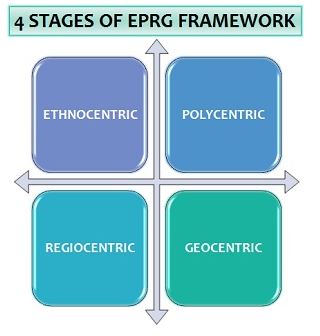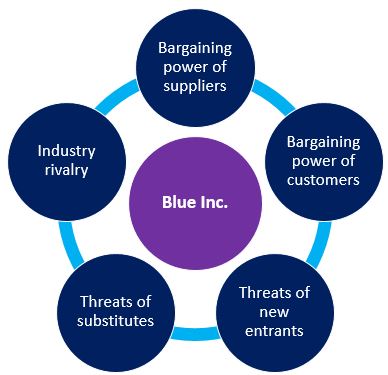Contents in this Page
Marketing Approaches
After reading this blog, you will have clear knowledge about Global Versus Local Marketing Strategies. There are two type of marketing approach that marketers adopt according to their business plan for international business such as: standardization and adaptation (Turnbull, P.W. and Paliwoda, S., 2013). These approaches are stated below:
Global Versus Local Marketing Strategies: Arguments for and against the global marketing plan (Standardization)
Standardization refers to the way by which marketers target foreign market with same product they produce, without bringing major change (Czinkota, and Ronkainen, 2011). Through this global marketing strategy ‘Blue Inc’ will be able to achieve economies of scale because they do not need to produce different product or redesign the products. ‘Blue Inc’ will be able to manage and monitor business easily because same advertising strategies and products will be exported. The company will be able to create global demand of same products.
On the other hand, ‘Blue Inc’ will have slow grow rate if they apply global plan because the company will not consider customers’ requirement. Culture of every country is different from each other therefore the products of ‘Blue Inc’ may not match with the host country’s culture. Customers will get bored on the sameness of products when the company will export same products every time. Therefore will switch to competitors who offers unique designs and quality and Blue Inc will lose many customers.
You may also like to read in below blog posts: Ansoff Matrix for Vodafone Porter’s Five Forces model of Vodafone Stakeholder analysis for Vodafone Strategic planning for Vodafone
Global Versus Local Marketing Strategies: Arguments for and against Local marketing (Adaptation)
Adaptation refers to the strategy by which companies target foreign market by customizing products and services according to the nature, buying habit, income level and other factors of targeted market (Sternquist, 2010). Blue Inc will be able to create outstanding local image through this strategy. They will target customers according to their requirement sit will increase their demand greatly in the new market. Blue Inc will be able to increase market share highly and increase because customers will treat them as an international company.
Adaptation will increase the production cost of ‘Blue Inc’ because the company will produce different products for targeted market and redesign the products. Therefore the company will not be able to achieve economies of scale. Adaptation strategy is tough to monitor and control because products are different including advertising strategies. ‘Blue Inc’ will face difficulties while customizing products because it is tough to identify the core needs of customers. This process will limit the transfer of knowledge because experience are improved on just one country’s market.
Global Versus Local Marketing Strategies: What is Appropriate for ‘Blue Inc’:
‘Blue Inc’ should apply global marketing plan approach while expanding business because it will help the company to achieve economies of scale whilst adaptation will increase the production cost of the company. The company does not need to redesign products where adaptation needs redesign of products and services. Standardization will increase the transfer knowledge of ‘Blue Inc’ that adaptation cannot increase. The company will not need to change advertising approaches for the reason that they will promote products with same advertising with dubbing language only. Same products and same advertising approach will help ‘Blue Inc’ to monitor and control business easily.
Application of Marketing Mix:
Marketing mix refers to the marketing tools: price, place, promotion and product and their application on proper way by considering the products and services of an organization (Baack, Harris, and Baack, 2013). Marketing mix is an important part of the topic Global Versus Local Marketing Strategies. It is about selling right product in right place with right price including effective promotional activities.

Price: Price refers to the amount of money that customers pay for the products and services they use (Dasgupta, 2011). ‘Blue Inc’ can adopt two pricing strategies such as: standardized pricing and adaptation pricing. When the company will apply adaptation pricing strategy, they will consider the income level, financial ability of the country, tax rate and other financial factors of host country (Skarmeas, Zeriti, and Baltas, 2016). And standardization is the strategy by which ‘Blue Inc’ will not consider the financial factors while setting the price of their clothes and accessories. They should apply standardized pricing because it will improve their cost control. ‘Blue Inc’ will be able to save cost in record keeping and inventory measurements will be more reasonable including easier.
Product: Product is the tangible or intangible attributes that are offered to customers to meet their demand (Skarmeas, Zeriti, and Baltas, 2016). If ‘Blue Inc’ apply standardization approach in product, they will export the existing products without any major change. When the company will adopt adaptation approach they have to produce products by considering the demand of customers. It will increase the production cost of ‘Blue Inc’ therefore the company should adopt standardize products to export in targeted market. As a result, the company do not need to redesign the products or bring any major change in products. They will successfully achieve economies of scale through standardized approach.
Promotion: Promotion refers to the way by which an organization attracts targeted customers to buy their products (Smith, and Zook, 2012). Standardization promotion refers to apply same advertising approach to foreign market and adaptation promotion means customize advertisement according to the culture of host country (De Langhe et al., 2011). ‘Blue Inc’ should apply standard promotion to decrease promotion cost. According to this approach, they will use the advertisements which are used in UK. The advertisements will be dubbed on host country’s language that will help customers to easily understand the marketing message.
Place: It is the marketing tool that refers to the way by which products and services are delivered to customers (Bertoli, 2013). ‘Blue Inc’ can sell their products to customers through retailers, wholesalers, distributors and internet. Even they can open own showroom in host country to sell their products but it will increase the operating cost highly and more risky. Therefore, ‘Blue Inc, should follow the distribution strategy of host country and sell their products to the party they want to choose. It will reduce sales cost because the company will not bear showroom rent, storing cost and other costs.
They ways of organizing and evaluating international marketing efforts:
Organizational structures:
Functional Structure: It refers to the structure in which employees are organized according to their skills and knowledge (Estrin, Baghdasaryan, and Meyer, 2009). Blue Inc can have high level of specialization if they use this structure and working skills of employees’ will be enhanced properly because the functional knowledge will make them more adept in work.
Divisional Structure: It is the structure in which employees are ruptured into segments that corresponds to particular services, products or markets (Meyer et al., 2009). Blue Inc will be able to respond to changes of local market through adding or removing divisions. The company will have greater flexibility that will help to make outstanding place in local market.
Product Structure: Product structure helps business to organize their business in separate division emphasizing on different product or service of an organization (Hill, 2008). Blue inc will be able to focus on specific market segments and it will help them to be more customers focused.
Matrix Structure: In this structure, employees have dual reporting relationships to both functional and product manager (Al-Kaabi, Demirbag, and Tatoglu, 2010). It will help Blue Inc to coordinate products and projects formally across functional departments. The company will be able to utilize their resources efficiently and that will bring outstanding outcome.
Reporting and Decision Making for international business:
Centralized system: It is the process in which decision making and planning are done in head office and other offices receive command from head office (Park et al., 2011). Blue Inc will be able to control their other offices through the head office of UK. Therefore, they will be able to minimize cost, improve their quality of work, make employees more focused and a clear chain of command will be delivered. Disadvantage of the approach is members of other office can be annoyed because they have to right to interfere in decision making. As a result, it can harm the quality of employees’ performance.
Decentralized system: It is the approach where decisions are taken and plans are made with the participation of all parties (Gielens, Helsen, and Dekimpe, 2012). It will help Blue Inc to keep employees happy because everyone will be able to take part in plan and decision making process. It will feel them valued and the company will be able to ensure better management. Disadvantage of the approach is it makes decision making time consuming because everyone participate in decision making. And it is not possible to consider everyone’s opinion.
Management Orientation: EPRG Framework:

Ethnocentric Approach: This approach refers to the process in which international market is considered as domestic market and applies domestic market techniques in foreign market (Whitelock et al., 2013). This orientation will reduce the production and marketing cost of ‘Blue Inc’ because they do not need to produce new products for new market and the advertising strategy, pricing strategy, distributing strategy all are same. As a result, the profit level will increase highly by minimizing all costs and ‘Blue Inc’ will be able to monitor the business easily.
Polycentric Approach: It is the orientation in which organizations apply different techniques for each markets by considering the demand and culture of the targeted market (Hoppner, and Griffith, 2015). Blue Inc can adopt polycentric approach to achieve targeted place in the in host markets. It will help the company to know their customers and identify their demand effectively. Therefore, Blue Inc will be capable to fulfilling customers’ demand and create excellent local image in targeted market that will increase sales highly.
Re-geocentric Approach: Regional orientation refers to the way in which organizations see different regions as different market that they will target to expand their business (Gnizy, and Shoham, 2014). Blue Inc will target one region as one market and will use different techniques in different regions. The company will ignore all national boarders and will be able to target a region with same techniques and products. But Blue Inc will be more successful in production and research sector than marketing, if the company apply this approach.
Geocentric Approach: It refers to the approach in which companies consider whole world as a market and apply same techniques for the whole world without considering geographical regions (Srinivasan, 2008). Blue Inc will have integrated global outlook by applying this approach. This cannot be a proper option for Blue Inc. because the whole market cannot be treated as one market since the culture, tests and preferences are different.
Competitive Analysis: Porter’s Five Forces:

Threat of new entrants: High: Blue Inc will be a new brand in foreign market therefore new entrants will be able to replace their demand easily. If new brand offers better product from the company, customers will switch to the company easily.
Threat of substitutes: High: Threat of substitutes will be high for Blue Inc because the local market will be full of existing products which are made according to customers’ demand of the country. Therefore, customers will switch to the products if they get products of better quality within lower price.
Bargaining power of suppliers: Low: Threat of suppliers are low for Blue Inc because it will export own brands to foreign market. Therefore, suppliers will not be able to influence their business and Blue Inc will find optional suppliers from UK easily.
Bargaining power of buyers: Very High: Bargaining power of suppliers are very high for Blue Inc because buyer are the stakeholders for whom the business are operated. If customers do not buy the products of the company, they will fail in the project of expansion in new market.
Competitive rivalry: Very High: Competitive rivalry of new market will be very high for Blue Inc because they will compete with the established brands of the area. People will hardly be attracted toward Blue Inc because of the high demand of local brands of the market.
Global Versus Local Marketing Strategies: Comparison of home and international orientation with their implications:
Home and international orientation are two important ways of evaluating international market. Comparison between the approaches are stated below:
Firstly, in Home orientation the marketing strategy of domestic market are applied to foreign market. Therefore, it needs less effort because marketing strategy of domestic are applied to international market (Kaynak, and Jansson, 2012). On the other hand, new marketing strategy is developed for global market in international orientation. As a result, organizations have to develop new marketing strategies for global market and it needs more effort (Skarmeas, Zeriti, and Baltas, 2016).
Secondly, Home orientation needs less cost while expanding business because same marketing approach are applied to new market without any consideration (Dasgupta, 2011). Whilst, new marketing strategies are developed for international orientation and it needs more costs in developing new strategies (Tian, and Borges, 2011). Therefore, it increases costs for companies.
Thirdly, the expansion route is much easier in Home orientation approach because companies do not need to manufacture new products for new market (Bertoli, 2013). On the other hand, international orientation needs to produce new products for global demand that are different from domestic products and services. Therefore, international orientation is complicated than home orientation (De Langhe et al., 2011).
Fourthly, the home orientation may not be successful because demands of every country are not compatible with domestic country. Therefore, companies who apply this approach will be capable to attract limited range of groups (Smith, and Zook, 2012). Whilst, international orientation will be more successful than home orientation because companies consider global demand while launching products (Yeniyurt et al., 2009).
Suitable orientation: From the above comparison it is found that Home orientation will be suitable orientation for Blue Inc. International orientation needs more effort and cost than home orientation. Therefore, Blue Inc should adopt home orientation to expand business within lower costs and less complexities. And this orientation has less risks than international orientation.
Conclusion
Global Versus Local Marketing Strategies provides knowledge about the strategies companies should adopt to foster their success. When companies go for international market, they have face different environment in global market. Global market is too much competitive and globalization has made this more competitive because the trade barriers among countries are reduced (Hoppner, and Griffith, 2015). Blue Inc is a British company and international market entry routes of the company has been analysed in this report. It will face tough competition in global market and have to be careful about choosing appropriate strategies. The company should adopt standardization as their marketing strategy to expand business within lower cost. And Blue Inc will consider the external factors of the host country where they want to enter because it will help them to make effective plan to interact with the environment successfully.
